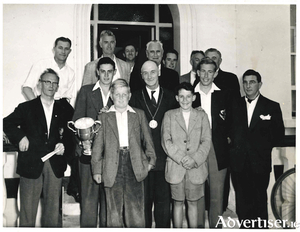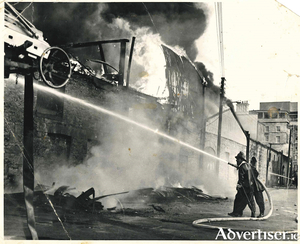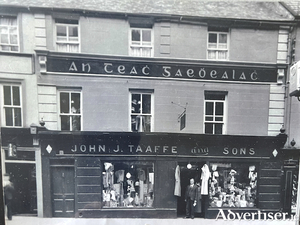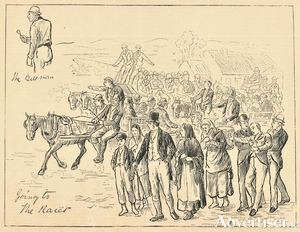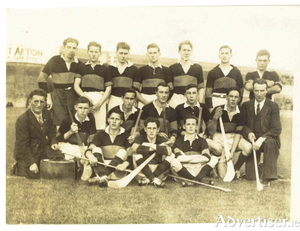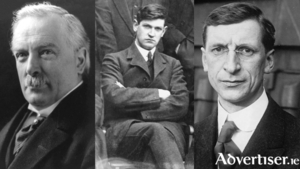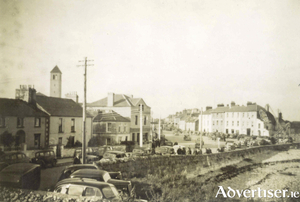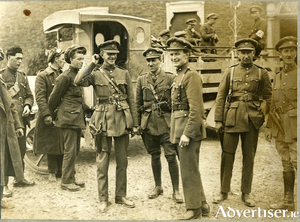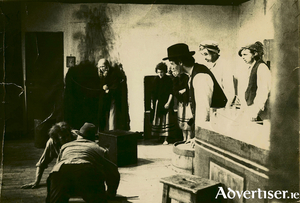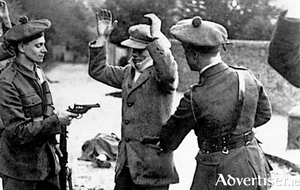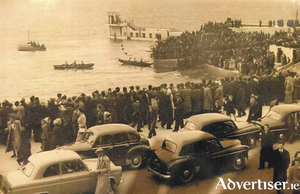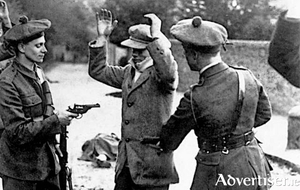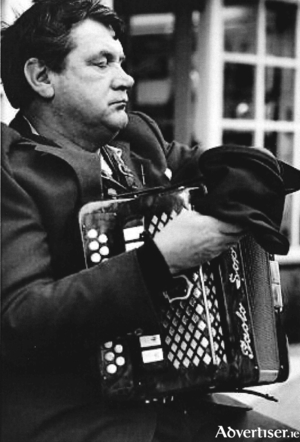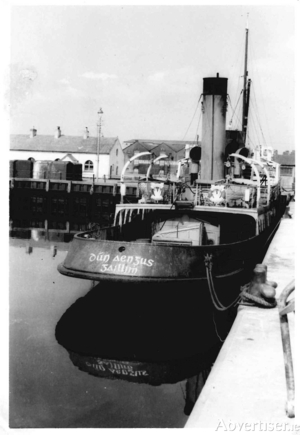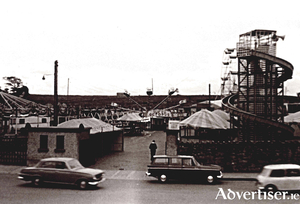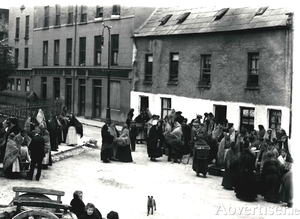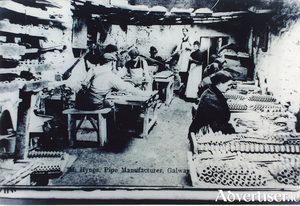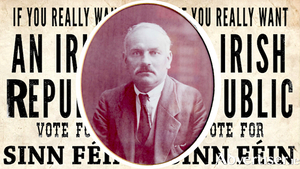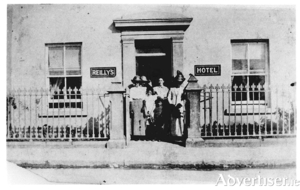Galway Swimming Club, a brief history
Wed, Aug 18, 2021
Ninety years ago, on August 2, 1931, the world famous long-distance swimmer, Miss Mercedes Gleitz, attempted to swim from the Aran Islands to Salthill. She did in fact manage to swim from Inis Meán to Spiddal in 18 hours 43 minutes, a distance of 18 miles as the crow flies, but it was estimated that with currents, etc, she covered a distance of nearly 30 miles. Two days later she gave a swimming demonstration in Salthill and presented a cup to the Chamber of Commerce to be presented to the school in the county which presented the greatest number of swimmers in relation to its student numbers. She stimulated a lot of interest in the sport, which had received a terrific boost just a few months before with the formation of two clubs, Blackrock Swimming Club and Galway Swimming Club. This guaranteed competition between the clubs and quickly helped raise standards.
Read more ...The big fire, August 1971
Wed, Aug 11, 2021
Monday morning, August 16, 1971 (50 years ago next Monday), started off in a normal way in Galway but that quickly changed very dramatically. A fire was discovered shortly before 11.30am in McDonough’s Yard on Merchants Road. It was spotted by a lady standing across the street at the Tourist Office and she alerted the fire brigade. At the time, there were only about four full-time firefighters in the station but they responded very quickly.
Read more ...Taaffe's of William Street
Wed, Aug 04, 2021
John J Taaffe and his wife Henrietta came to Galway in the mid-1920s from Co Cork. He had been associated with Bantry Woolen Mills which unfortunately went out of business when the factory was burnt down during the War of Independence. With his background in the textiles business, it was probably natural for John to set up a drapery shop at Number 12 William Street. As you can see from the beautiful Gaelic script on the façade, he was a fan of the Irish language. He and Henrietta had five children, Joseph, Eddie, Netta, Una, and Flo.
Read more ...'Only a rale good horse can win it'
Wed, Jul 28, 2021
That was the answer the journalist PD Mehigan got when he asked a breeder to explain the magic of the Galway Plate some 80 years ago. An examination of the records bore out that theory for him - no bad horse, or middling horse, has ever won the Galway Plate.
Read more ...The Galway minor hurling team, 1941
Wed, Jul 21, 2021
For me, hurling is the ultimate game, but it is more than just a game, a team contest of speed, skill, style, hand-eye co-ordination, a national passion which is woven into the social fabric of Irish society, a game that is played for pride, not money, and quintessentially Irish. As a lady once said, “When you think of it, apart from the Irish language, there is nothing more Irish in this country than the game of hurling.” The game has always flourished in Galway and this county has made a major contribution to its history.
Read more ...Endgame of the War of Independence - Galway July 1921
Thu, Jul 15, 2021
On July 9 1921, the British Government entered talks with Sinn Féin resulting in the Truce coming into effect on July 11 at midday.
Read more ...The changing face of Salthill
Wed, Jul 14, 2021
This 1948 photograph was taken from the old RIC barracks which was opposite the Banba Hotel . The bit of a wall you can see in the immediate foreground was part of ‘The Lazy Wall’. There was a concrete seat running along the other side of this wall and it was there people known as the ‘Fámairí’ used to congregate, people mostly from farming families. When they had the harvest in, they would come to Salthill on holiday and often meet with the same people as last year. They would sit here and gossip, smoke their dúidíns and sometimes paddle in the sea beside them.
Read more ...Galway online lecture on the Truce and the Civil War
Thu, Jul 08, 2021
An online lecture examining the Truce between the IRA and the British government in 1921 and the Civil War which broke out the following year, takes place this weekend.
Read more ...Druid, the expression of imagination
Wed, Jul 07, 2021
It is hard to believe that it was 46 years ago this week that Druid Theatre first tread the boards. The location was the Jesuit Hall and the play was The Playboy of the Western World. The following night, they put on It’s a two foot six inches above the Ground World by Kevin Laffan and on the third night, it was The Loves of Cass Maguire by Brian Friel.
Read more ...Galway to host online conference on the War of Independence
Thu, Jul 01, 2021
JULY 11 marks the 100th anniversary of the end of the War of Independence. Ireland’s fight for self-determination, and its aftermath, will be examined from a Galway perspective at an upcoming online conference.
Read more ...The Currach Races, Salthill
Wed, Jun 30, 2021
The Currach Races … An Tóstal … Rásaí na gCurrachaí … 60,000 people plus in Salthill … lines of people four and five deep along the Prom … Every vantage point taken … specially designed currachs everywhere, up on trailers, sitting on grass verges, at the water’s edge … Always a crowd of people inspecting them … The currachs on the sea like tiny insects, indistinguishable in the mist and drizzle … Mountainy men and island men … báinín … Bréidín … beautiful handknit Aran croiseanna … Caps … caps … thousands of caps … women in many different styles of shawl … some red petticoats … stalls everywhere selling minerals, sweets, fruit … many stages erected along the Prom hosting sean nós singers, dancers, traditional musicians … The atmosphere of a massive aeríocht … Programmes written in the old Irish script … strange accents from Donegal … Three-card trick men … canoe races between the currach races … Trawlers marking the race route … Kerry accents … canúint Chonamara … A cluster of bookies at Blackrock … Bottles of stout and lemonade … Gaelinn spoken in lilting Cork accents … Gaeilge spoken by Aran Islanders who had come in on the Dún Aengus … A marquee for food at Blackrock … another for visiting crews … The Joyces of Inis Bearacháin … Bands playing at the Ladies Beach and at Blackrock … Currach men from Mayo, Sligo, and Clare … Commentary on the races blaring from speakers all over Salthill … A festival dance in the Hangar. This was the All-Ireland Currach Racing Championship which was first held in 1953 in the Claddagh and thereafter for several years in Salthill. The Prom provided the ideal viewing stand, the oarsmen provided the excitement, and the crowds provided the atmosphere.
Read more ...June 1921 - Britain continues to deny policy of reprisal killings and house burnings in Galway
Thu, Jun 24, 2021
The election, on May 24 1921 in the six counties of what was to become Northern Ireland, resulted in the Unionist Party winning 40 of the 52 seats. Catholics in the six counties would now be forced to stare down the barrel of partition and sectarianism as a new order was set in place.
Read more ...Joseph Gaynor, a Galway busker
Wed, Jun 23, 2021
Busking is the practice of performing in public places, street performances for tips or gratuities, voluntary donations. It may come from the Spanish word buscar – to seek (fame and fortune), or the Latin word buscare – to procure, to gain.
Read more ...The Dún Aengus
Thu, Jun 17, 2021
The first steamer service to the Aran Islands began almost 150 years ago, in 1872, with a paddle tug called The Citie of the Tribes. She was operated by the Galway Steamship Company and was also used to tow barques and other sailing vessels to and from Galway port.
Read more ...Old Galway newspapers
Wed, Jun 09, 2021
The first book printed in Ireland was The Book of Common Prayer in 1551. As printing became more sophisticated, newspapers became inevitable. The first gazettes were published originally in manuscript – the word gazette being derived from gazetto, a coin of Venice, the amount paid for reading the news. The earliest printed newspapers began to appear around the end of the 16th century. These were small, quarto in size, printed on one or both sides of the page, or of four pages containing intelligence of public interest which were variously called 'Books of Newes', ‘Newe Newes’, 'Wonderful Newes', ‘Bloody Newes out of Ireland’, etc.
Read more ...The ‘amusements’ in the Fairgreen
Thu, Jun 03, 2021
It is good to see the funfair being set up at the moment along the Prom, a sure sign that the summer is on the way. There has been a history of summer funfairs in Galway for well over 100 years, though they were always known here as ‘the amusements’. In the early days, the Toft family used to organise them in Salthill Park. Occasionally, the neighbours used to object to the noise and the traffic, and on at least one occasion, they were invited next door on to the site in front of Dr O’Beirne’s house (where Leisureland is today).
Read more ...The egg and butter market in Church Street
Thu, May 27, 2021
Some weeks ago we wrote about the virtues of country butter being sold at the Saturday Market, but it seems there were occasional vices there too. The ink was hardly dry on the paper when David Barrett sent us an account of a court case that took place at the Galway Petty Sessions in September 1910 before the magistrates Messrs J Kilbride and JS Young. District Inspector Hildebrand prosecuted Mrs Sarah Bane, Moycullen, on three different counts of selling butter that was unfit for human consumption to Kate Hoare, Mary Griffin, and Norah Joyce. Mr Cooke, from Blake and Kenny solicitors, appeared for the defence.
Read more ...Clay pipes and dúidíns
Thu, May 20, 2021
In the days before cigarettes were invented, clay pipes were very popular and could be found in most houses in the country. They were mainly used by working class people, easy to purchase, mass produced, cheap and light, and smoked by men and women. The short stemmed version was known as a dúidín or dudeen in Ireland, as a cutty in Scotland, and a ‘nose warmer’ in England. The longer version was known as the Beannacht Dé pipes or ‘The Lord ha’ mercy’ pipe, as that was how people invariably responded when you gave them one, “Beannacht Dé leat”.
Read more ...Murder in the city, intimidation in the county - Galway, May 1921
Thu, May 13, 2021
The Government of Ireland Act came into being on May 3 1921, resulting in a parliament for the six northern counties and devolved powers for the 26 counties.
Read more ...Reilly’s Hotel, Salthill
Thu, May 13, 2021
This small hotel owned by Mrs B O’Sullivan was prominently situated in Salthill (near where Seapoint is today), fully licensed, hot and cold running water in all bedrooms, and had a large bungalow in the grounds at the back.
Read more ...